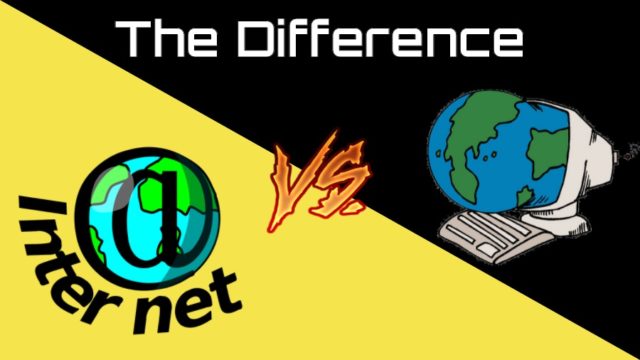What’s WWW And The Internet? What’s The Difference Between The Internet And World Wide Web?
Short Bytes: All things you do, whether it is streaming movies, browsing Facebook, some other thing, you are doing it on the web, not on the internet. The Internet is a network of computer devices, routers, and server across the globe. While the web or World Wide Web is like software running on the internet, it doesn’t have any physical existence. The web used to access all the websites and services with the help of various protocols.
e usually assume that the internet and world wide web (commonly known as the web or WWW) are the same things. But they aren’t, although, they’re required to exist together to get things done. Most of the time, we don’t give a second thought before using one word in place of the other.So, what is the internet?

The Internet is the physical network of network of networks, and so on. The devices connected to your home router can be called as the part of local area network (LAN). Similarly, if a network expands across your city, it would be known as the Metropolitan Area Network (MAN). The Wide Area Network (WAN) can have its reach across the whole nation, or even overseas. (I will be writing a detailed article on LAN, MAN, and WAN in future)
In a nutshell, an uncountable number of small, medium, and large-sized networks contribute towards a massive network known as the Internet. It consists of various end-user devices, routers, switches, data servers, etc. Special underwater cables are laid across countries and continents to make the internet a global thing.
And, what is the World Wide Web?

Now, all the computers connected together as the internet aren’t going to transfer information on their own.
Let us take an example of a talking club. Consider the people sitting in the club as the devices connected to the internet. Now, they can communicate over many mediums. For instance, they can talk to each other or write their thoughts on a piece of paper and pass it on. You can relate the world wide web as one of the ways to exchange information on the internet. Usually, we define WWW as the information space where web pages (and other things) are identified using their URLs (Unique Resource Locators), interlinked using hypertext links and can be accessed over the internet.
You can relate the world wide web as one of the ways to exchange information on the internet. Usually, we define WWW as the information space where web pages (and other things) are identified using their URLs (Unique Resource Locator), interlinked using hypertext links, and can be accessed over the internet.
Assume you’re sitting in such a club (internet) with other people (devices connected to the internet). You can ask one of them about their thoughts (web pages) by speaking (the web). Their identification details (URL) can be their name or face, in case you’re new to the club. And the hypertext link is ‘you’ trying to make efforts to access more of his thoughts.
In reality, the hypertext links are the clickable links you find on websites. So, if a person tells something to you and you want to know more, then, you can ask related questions. You can find many links on this page also, click on them to know more.
Now, there might be rules in the club regarding how you should talk. For example, it might be compulsory to speak in a low voice, or you need to close your eyes while talking. We have the protocols to maintain a smooth flow of data from a web server to your web browser. And we call it the HTTP (Hypertext Transfer Protocol), or a newer one, HTTP/2.
HTTPS is a variant of HTTP that secures the connection by enabling encryption. However, HTTP is only one component that enables the communication. There are other helping hands like TCP/IP and UDP protocol. But that’s in a different depth of the story.
Normally, we don’t visit the websites directly. We take the help of search engines which crawl everywhere and index the sites. There is a part of the web beyond the reach of the search engines. It is called Deep Web.
Who owns the web?
No one owns the web. It was created by the computer scientist Tim-Berners Lee in 1989 while working at CERN. He also led the foundation of the World Wide Web Consortium (W3C) which looks after the development of the web. Lee is the current director of the consortium.
What about other mediums of conversation?
Talking is one way of exchanging information. But there are other means as well. For instance, you prefer to write the stuff on a piece of paper. You can assume this thing as the email. Yeah, email is a different thing than the WWW. And I hope you don’t try to mix the two things.
The use of email or electronic message is to exchange messages between two devices over the internet. Earlier, it was all text in the emails, but nowadays, the emails have started to include rich multimedia content. There are separate protocols to make sure the delivery of emails across devices remains uninterrupted. For instance, there might be a rule to put the piece of paper in a box next to the addressee.
Some of the popular email protocols are SMTP, POP3, IMAP, they have their own set of pros and cons. Similarly, there can be other modes of conversation. If you can also transfer files on the internet directly using the FTP (File Transfer Protocol).
Did you find this helpful? Drop your thoughts and feedback.









0 comments:
Post a Comment